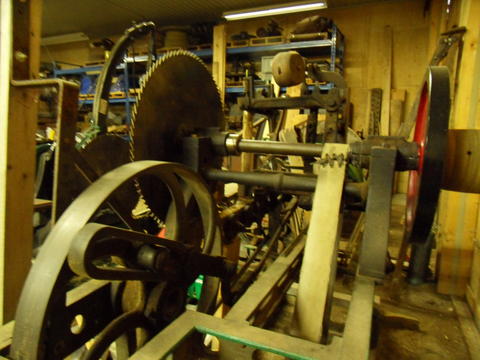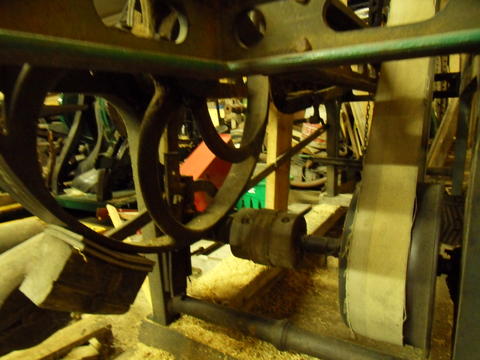Shingle mills at the Ontario Steam Heritage Museum
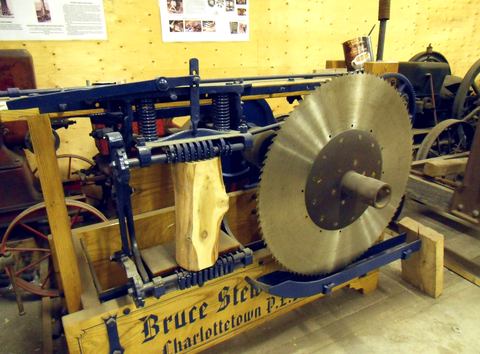 Richard Mosher, chief engineer at the
Ontario Steam Heritage Museum
is an avid collector of shingle mills.
Richard Mosher, chief engineer at the
Ontario Steam Heritage Museum
is an avid collector of shingle mills.
A shingle mill is a machine that is used to slice a section of log into tapered wedges to make wooden shingles. Before asphalt shingles, most roofs were covered in wood shingles. Like asphalt shingles, these needed to be replaced from time to time. So there was always a need for more shingles.
Many of the mills in Richard's collection are fully automatic millst. These all work roughly the same way - a piece of log is moved past a spinning saw blade to slice off a shingle, then slid back, advanced forward, and the next cut made. The log is alternately advanced more at the top, then more at the bottom, so that each cut will produce a wedge, with the narrow end alternately up or down.
A shingle mill is really an ideal companion for showing off a steam traction engine at a fair. It's not really practical to use an engine to plough up the fairgrounds, so if you want to show the engine doing something, you have to power some stationary machine. Threshing machines are cumbersome to show off, with their need for lots of material and a large crew, and portable sawmills are kind of awkward as well. But a shingle mill is nice and compact, fun to watch, and needs only one person to operate.
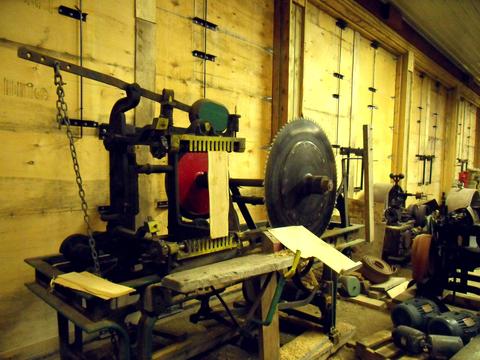
| 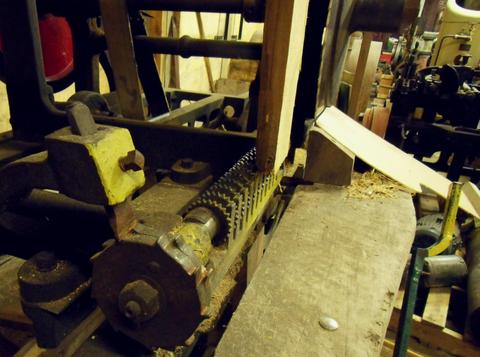
|
There's a similar ratchet at the top. The important thing is to set the starting position so that the top and bottom ratchets produce their large intervals on alternating cycles.
A ledge of fingers between the feed sprockets ensures that the log doesn't fall out once what is left gets too narrow. The log just ends up sitting on the ledge and doesn't advance further.
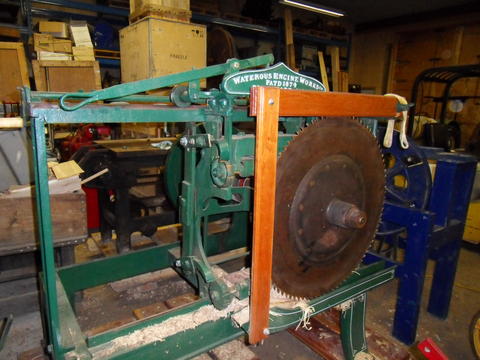
| 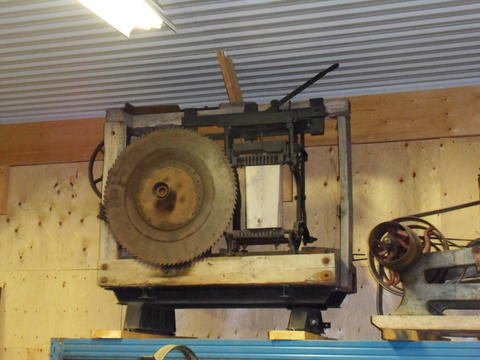
|
I have to say, I have never seen so many shingle mills in one place! I said to Richard "there must be at least 10 of them". His response "Actually, there's more outside. Over 20".
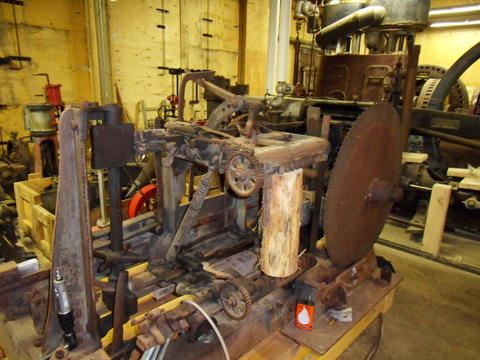
| 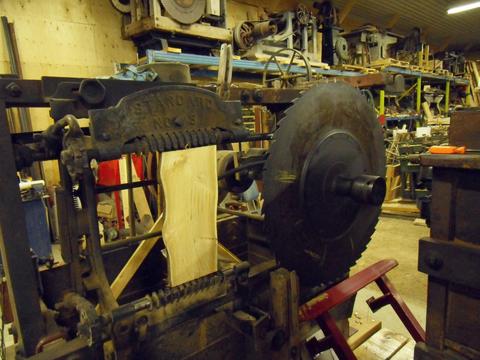
|
The mechanisms behind the shingle mills are interesting to look at. Once a log is loaded, the shingle mill sequences all the cuts automatically, so there's plenty of belts, pulleys, and levers to accomplish all that!
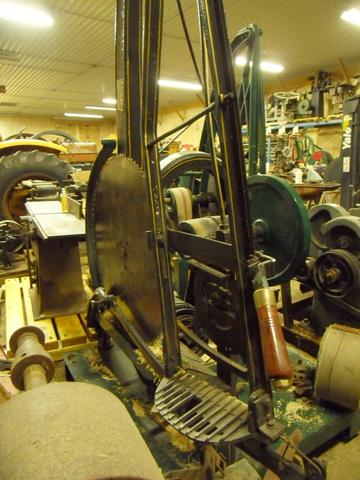
| 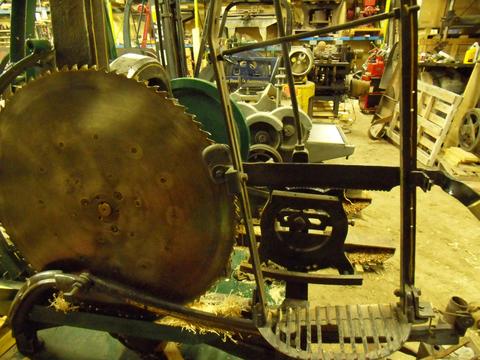
|
The shingle mill above is a "manual" shingle mill. In this type of shingle mill, the log is loaded onto a swinging arm and manually pushed past the saw blade. After the cut, the operator raises the handle to release the log and pushes it forward against a guide to position it for the next log. The guide pivots up and down to help positioning the log for alternate tapering up or down slices.
Richard says the manual shingle mills have the advantage that they don't need as much power. The operator can ease off on the feed rate when the blade starts to slow down, whereas an automatic mill will just feed the log at a constant rate. Manual mills would have been of advantage for water powered sawmills during the summer when the flow rate was too low to operate the automatic mills.
| There are plenty of videos showing shingle mills in operation on the net. Here's one of the better ones that I found. The video was taken at a fair, unsurprisingly. |
See also:
Woodworking equipment at the Ontario Steam Heritage Museum
